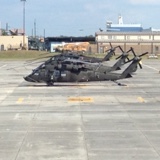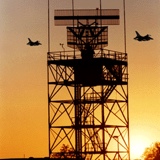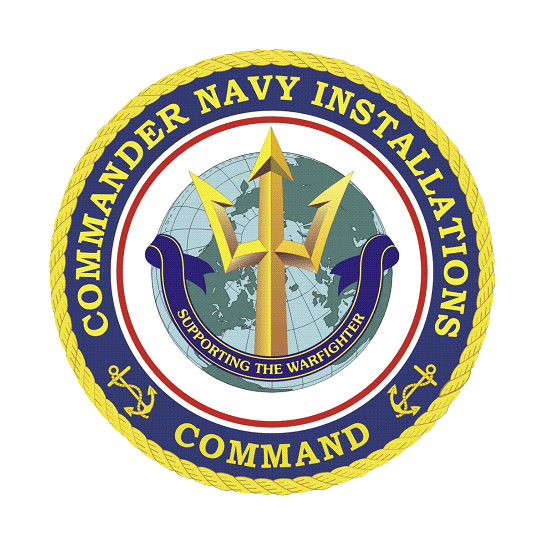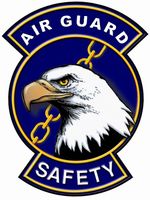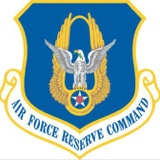Information
-
Document No.
-
Audit Title
-
Client / Site
-
Conducted on
-
Prepared by
-
Location
-
Personnel
A - Program Management
-
A1.00 Did the unit develop and execute a corrective action plan to fix problem areas identified during the previous ARMS? <br><br>
-
A2.00 If applicable, does the unit's SOP address terrain flight hazard avoidance? <br>
-
A3.00 Does the unit’s SOP address Instrument Flight and has the unit developed and specified an emergency recovery procedure as a contingency for inadvertent IMC in the SOP? <br>
-
A4.00 If applicable, does the unit's SOP address passenger, medical patients, and troop carrying operations? <br>
-
A5.00 If applicable, does the unit’s SOP address external and internal cargo operations? <br>
-
A6.00 If applicable, does the unit's SOP address parachute operations? <br>
-
A7.00 If applicable, does the unit's SOP address tactical infiltration/exfililtration techniques (rappelling, FRIES, SPIES, etc.)? <br>
-
A8.00 (NATIONAL GUARD ONLY) If applicable, has the unit received approval from NGB-AVS-S to perform tactical ingress/egress tasks when supporting federal, state, or local Law Enforcement Agencies (LEAs)? <br>
-
A9.00 If applicable, does the unit's SOP address multi-aircraft operations? <br>
-
A10.00 If applicable, does the unit's SOP address forward area refueling and rearming operations? <br>
-
A11.00 If applicable, does the Commander's ATP SOP address simulator training for rotary and fixed-wing aircraft? <br>
-
A12.00 Has the Commander organized a Standardization Committee? <br>
-
A13.00 Has the Brigade level Commander designated proper FAC levels for all operational flying positions? <br>
-
A14.00 (National Guard only) Has the FTS SAAO or proper authority approved flight crew designations? <br>
-
A15.00 Has the unit commander established, in writing, a formal flight crew qualification, selection, and evaluation program? <br>
-
A16.00 Does the unit’s ATP SOP address the specific requirements for PC training, assessment, and evaluation?<br>
-
A17.00 If applicable, has the commander established written authorization for designated non-rated personnel to operate the APU and are they properly trained? <br>
-
A18.00 Has the commander established in writing which orientation items, peculiar to the local area, are required for the local area orientation flight? <br>
-
A19.00 If applicable, does the Commander's SOP address Night/NVS/NVG training for both rated crewmembers and non-rated crewmembers?<br>
-
A20.00 If applicable, does the unit's SOP outline specific supplemental lighting configurations authorized by the commander? <br>
-
A21.00 If applicable, does the unit's SOP authorize, and include procedures for, the use of laser pointers during ANVIS missions? <br>
-
A22.00 If applicable, has the commander established a CID training program in the ATP portion of the unit’s SOP? <br>
-
A23.00 If applicable, does the commander's SOP address an AMC training program? <br>
-
A24.00 Does the commander's ATP SOP address academic training (subjects, scheduling, make-up and documentation)? <br>
-
A25.00 Does the Commander's ATP SOP address aeromedical training? <br>
-
A26.00 Does the commander's ATP SOP address a CBRN training program? <br>
-
A27.00 Does the commander's SOP address extreme environmental operations? <br>
-
A28.00 Does the commander's ATP SOP address a no-notice proficiency evaluation program, and if so, is the unit complying with the program? <br>
-
A29.00 Has the commander organized a standardization committee and are they meeting as required? <br>
-
A30.00 Does the unit’s SOP address extreme environmental operations (blowing snow, desert, over water, and so forth)? <br>
-
A31.00 Does the unit’s SOP address a CBRN evaluations program? <br>
-
A32.00 Has the commander designated FAC levels?
-
A33.00 Do units have a no-notice proficiency evaluation program established?<br>
-
A34.00 Has the commander established, in writing, a formal flight crew qualification and selection program which addresses qualification, selection and evaluation requirements for unit flight crew members? <br>
-
A35.00 Has the commander determined which orientation items are required for the local area orientation flight? <br>
-
A36.00 Has the unit developed and specified an emergency recovery procedure as a contingency for inadvertent IMC in the SOP? <br>
-
A37.00 Do aviation companies, troops, or detachments perform at least two no-notice evaluations quarterly for assigned RCM and NCM?<br>
-
A38.00 Are the appropriate 8th Army (FA) Supplemental Training Gates accomplished before progression to the next readiness level? <br>
-
A39.00 Have newly assigned aircrew members received the appropriate orientation training prior to progression to RL1? <br>
-
A40.00 Are Laser & Directed Energy Hazards and Risk Mitigation addressed in the unit SOP? <br>
-
A41.00 Does the unit have a Letter of Agreement (LOA) for UAS operations requiring pre- coordinated missed approach procedures, and does the host nation approved document cover lost link/lost visual contact? <br>
B-RCM IATF
-
B1.00 Is the IATF maintained IAW TC 3-04.11? <br>
-
B2.00 Are DA Form 7120 series completed and maintained as required? <br>
-
B3.00 Is DA Form 7122-R completed and maintained as required? <br>
-
B4.00 Does the DA Form 7122-R contain an entry for assignment to current unit? <br>
-
B5.00 Is the Commander’s Evaluation and ATP integration completed within 45 calendar days after the crewmember signs into the unit or effective date of flight orders/date of transfer? <br>
-
B6.00 Are crewmembers designated an RL in all three modes of flight during the Commanders Evaluation, and have their progressions been completed within 90 days (AC, AGR, OSAA and OSACOM)/ 1 year (RC), to include any exclusion period if applicable?<br>
-
B7.00 If the RL progression exclusion period (45 days for AC & active Guard or Reserve, 90 days otherwise) is exceeded do crewmembers restart their current RL progression training? <br>
-
B8.00 During RL progression, do crewmembers demonstrate proficiency in each mode of flight (day, night, NVD or CBRN) required by the ATM for each task before progressing to RL 1, and receive a local area orientation in each mode they are authorized to perform duties as designated by the commander (day, night, NVG, NVS)?<br><br>
-
B9.00 Does the DA Form 7122-R contain an entry for completion of all flight, oral, and written evaluations? <br>
-
B10.00 Do all crewmembers that are authorized flying status have an IATF prepared? <br>
-
B11.00 Are all RL 1 crewmembers completing annual ACT-E Sustainment Training and is completion annotated on DA Form 7122-R? If not, are they restricted from performing flying duties until the requirement is completed?
-
B12.00 Does the DA Form 7122-R contain an entry for completion of all ATP requirements? <br>
-
B13.00 Does the commander sign required approval entries entered on the DA Form 7122-R? <br>
-
B14.00 If applicable, are completion of gunnery requirements annotated on the DA Form 7122-R?<br>
-
B15.00 If applicable, do crewmembers assigned to a TOE rotary wing unit have their CID annual training requirements documented on DA Form 7120-3 in the IATF, and the unit’s ATP SOP? <br>
-
B16.00 Are waivers and extensions applied correctly? <br>
-
B17.00 If applicable, are company commanders and warrant officers with an SQI in a valid position, attaining PIC 180 days after progressing to RL 1? <br>
-
B18.00 If applicable, has low pressure/high altitude training been completed and documented? <br>
-
B19.00 Have trainers and aviators maintained currency and qualification along the No Fly Line sector or within corridors? <br>
-
B20.00 Are area type qualifications unique to the Republic of Korea (ROK) or unit specific operations or tasks (e.g. Hoist, Water Bucket, DLQ) documented on DA Form 7122-R, DA Form 4507-R, or standardized unit designated form? <br>
C-NCM IATF
-
C1.00 Is the IATF maintained IAW TC 3-04.11? <br>
-
C2.00 Are DA Form 7120 series completed and maintained as required? <br>
-
C3.00 Is DA Form 7122-R completed and maintained as required? <br>
-
C4.00 Does the DA Form 7122-R contain an entry for assignment to current unit? <br>
-
C5.00 Is the Commander’s Evaluation and ATP integration completed within 45 calendar days after the crewmember signs into the unit or effective date of flight orders/date of transfer? <br>
-
C6.00 Are crewmembers designated an RL in all three modes of flight during the Commanders Evaluation, and have their progressions been completed within 90 days (AC, AGR, OSAA and OSACOM)/1 year (RC), to include any exclusion period if applicable?
-
C7.00 If the RL progression exclusion period (45 days for AC & active Guard or Reserve, 90 days otherwise) is exceeded do crewmembers restart their current RL progression training? <br>
-
C8.00 During RL progression, do crewmembers demonstrate proficiency in each mode of flight (day, night, NVD or CBRN) required by the ATM for each task before progressing to RL 1, and receive a local area orientation in each mode they are authorized to perform duties as designated by the commander (day, night, NVG)? <br>
-
C9.00 Does the DA Form 7122-R contain an entry for completion of all flight, oral, and written evaluations? <br>
-
C10.00 Do all non-rated crewmembers and non-crewmembers authorized flying status have an IATF prepared? <br>
-
C11.00 Are all RL 1 crewmembers completing annual ACT-E Sustainment Training and is completion annotated on DA Form 7122-R? If not, are they restricted from performing flying duties until the requirement is completed? <br>
-
C12.00 Does the DA Form 7122-R contain an entry for completion of all ATP requirements?<br>
-
C13.00 Does the commander sign required approval entries entered on the DA Form 7122-R? <br>
-
C14.00 If applicable, are completion of gunnery requirements annotated on the DA Form 7122-R?<br>
-
C15.00 If applicable, do crewmembers (assigned to a TOE rotary wing unit) complete the ATP Combat Identification Training (CID) annual requirements? Additionally, are the requirements documented on DA Form 7120-3 and in the unit’s ATP SOP?
-
C16.00 Are waivers and extensions applied correctly? <br>
-
C17.00 Are area type qualifications unique to the Republic of Korea (ROK) or unit specific operations or tasks (e.g. Hoist, Water Bucket, DLQ) documented on DA Form 7122-R, DA Form 4507-R, or standardized unit designated form? <br>
-
C18.00 Does the APU Training Program include documentation of training on DA Form 7122, Authorization on DA Form 7120-R, Part II or DA Form 7120-3-R and are initial and semi-annual evaluations conducted and annotated on DA Form 7120-R, Part IV?
-
C19.00 Does the commander initial changes to DA Form 7120-R and associated enclosures throughout the crewmember's ATP training year? <br>
-
C20.00 Has the commander listed all mandatory base, mission, and additional task performance and evaluation requirements for each individual crewmember on the DA Form 7120-1-R? <br>
-
C21.00 Does the folder contain the previous training years DA Form 7120 series? <br>
-
C22.00 Is the CERTIFICATION block on previous DA Form 7120-3-R completed, to include crewmember signature, date and the appropriate statement "have" or "have not" circled? <br>
-
C23.00 Does the DA Form 7122-R contain an entry for assignment to current unit?<br>
-
C24.00 Is the commander’s evaluation and ATP integration completed within 45 calendar days after the crewmember is assigned/date of transfer, or signs into the unit following MOS qualification? <br>
-
C25.00 Are RL progressions completed within 90 days (AC)/1 year (RC) from one RL to the next to include any exclusion period if applicable?<br>
-
C26.00 If the RL progression exclusion period (45 days for AC & active Guard or Reserve, 90 days otherwise) is exceeded, do crewmembers restart their current RL progression training? <br>
-
C27.00 During RL progression, do crewmembers demonstrate proficiency in each mode of flight (D, N) required by the ATM for each task? <br>
-
C28.00 Are all crewmembers “Aircrew Coordination” qualified prior to RL1, receive sustainment training annually thereafter, and is their qualification annotated on their DA Form 7122-R? <br>
-
C29.00 Does the DA Form 7122-R contain an entry for completion of all flight, oral and written evaluations? <br>
-
C30.00 Does the DA Form 7122-R contain an entry for completion of all APART requirements? <br>
-
C31.00 Does the DA Form 7122-R contain an entry for completion of annual flying duty medical evaluation (DA Form 4186 -Medical Recommendation for Flying Duty)? <br>
-
C32.00 Does the crewmember initial all entries on the DA Form 7122-R? <br>
-
C33.00 Does the commander sign required approval entries entered on the DA Form 7122-R? <br>
-
C34.00 Are waivers and extensions applied correctly? <br>
-
C35.00 Do all crewmembers in an operational/designated crewmember position have an IATF prepared? <br>
-
C36.00 Does the DA Form 7122-R contain an entry for transcription of data from the DA Form 7122-R to the DA Form 759? <br>
D-MISSION APPROVAL PROCESS
-
D1.00 Has the commander (in the grade of lieutenant colonel and above) developed and published policies and procedures for the mission approval process for those units under their command?
-
D2.00 Has the commander designated, in writing, Briefing Officers? <br><br>
-
D3.00 Has the commanders developed a training and certification program for Briefing Officers? <br><br>
-
D4.00 Are all Briefing Officers qualified as Pilot-in-Command? <br>
-
D5.00 Has the commander designated mission profiles, profile currency and qualification requirements, and indicated specifically which profiles individual Briefing Officers can brief? <br>
-
D6.00 Has the commander in the grade or LTC, or above, designated Final Mission Approval Authorities, in writing, and the level of risk (low, medium, high, extremely high) they are authorized to approve? <br>
-
D7.00 Has the commander developed a training and certification program for Final Mission Approval Authorities? <br>
-
D8.00 Have all designated Briefing Officers been trained and certified? <br>
-
D9.00 Have all designated Final Mission Approval Authorities been trained and certified? <br>
-
D10.00 Has the commander developed local checklists and risk assessment worksheets (RAW) for Briefing Officers to use in assessing aircrew mission planning and risk, to include the 8 key areas? <br>
-
D11.00 Has the AASF Commander developed and published policies and procedures for the mission approval process for operations under their supervision? <br>
-
D12.00 Are Briefing Officers designated, in writing, by the AASF Commander? <br>
-
D13.00 Has the AASF Commander developed a training program for Briefing Officers on the mission profiles they are authorized to brief? <br>
-
D14.00 Are AASF Briefing Officers qualified as Pilot-in-Command? <br>
-
D15.00 Does the AASF briefer designation approval letter show briefers by name and list mission profiles they are authorized to brief? <br>
-
D16.00 Has the SAAO designated Final Mission Approval Authorities, in writing, and the level of risk they are authorized to approve? <br>
-
D17.00 Has the AASF Commander developed a training and certification program for Final Mission Approval Authorities? <br>
-
D18.00 Have all designated AASF Briefing Officers been trained in the mission approval process? <br>
-
D19.00 Have all designated AASF Final Mission Approval Authorities been trained and certified? <br>
-
D20.00 Has the AASF Commander developed local checklists and risk assessment worksheets (RAW) for Briefing Officers to use in assessing aircrew mission planning and risk, to include the 8 key areas? <br>
-
D21.00 Has the commander designated, in writing, Briefing Officers/NCOs? <br>
-
D22.00 Has the commander designated Final Mission Approval Authorities in writing and the level of risk (low, moderate, high, extremely high) they are authorized to approve?<br>
-
D23.00 Has the commander developed a training and certification program for Briefing Officers/NCOs and Final Mission Approval Authorities? <br>
-
D24.00 Is the unit using the three-step mission approval process? <br>
-
D25.00 Has the commander established and retained the Risk Assessment Worksheet (RAW)? <br>
E-GUNNERY
-
E1.00 Has the commander designated a qualified individual to administer the unit Gunnery program? <br>
-
E2.00 Does the unit SOP address gunnery operations? <br>
-
E3.00 Does the assigned MG have the Gunnery program properly organized? <br>
-
E4.00 Has the commander outlined his objectives that meet his end-state requirements for the gunnery program? <br>
-
E6.00 Are 85% of assigned aircrews/door gunners qualified on Table VIII within the past 12 months (during or since the last training year for RC)? <br>[Applicable to Gray Eagle and Shadow Platoon/Company assigned/attached to a CAB]<br>
-
E7.00 Did the unit utilize an approved scoring method for grading engagements? <br>
-
E8.00 Have all RL1 aviators (FAC 1 & FAC 2), or door gunners, successfully completed an GST (within 180 days prior to conducting live fire tables) and within the past year?<br>[Applicable to Gray Eagle and Shadow Platoon/Company assigned/attached to a CAB]<br>
-
E9.00 Did the unit complete a comprehensive AAR after each live-fire gunnery event and do they forward a copy of the AAR to the Gunnery Branch? <br>
-
E10.00 Does the unit retain all the required items listed in TC 3-04.45 for a minimum of 24 months? <br>
-
E11.00 Does the unit have the range score sheets from past gunneries and do they contain the required information?<br>
-
E12.00 Does the unit retain gunnery qualification memorandums? [Applicable to Gray Eagle and Shadow Platoon/Company assigned/attached to a CAB]<br>
-
E13.00 Does the unit have a memorandum containing an assessment of the unit helicopter gunnery training program from the previous range? <br>
-
E14.00 (AH/OH units only) Did the unit retain AWSS and RETS printouts of all engagements from previous range?<br>
-
E15.00 (UH/CH units only) Does the unit’s SOP standardize and specify detailed procedures for communicating during live fire? <br>
-
E16.00 (UH/CH units only) If applicable, have all individuals that would not normally perform any crew duties on cargo or assault helicopters completed aircraft gunnery program specific training? <br>
F-SIMULATIONS
-
F1.0 Have the SFTS Flight I/Os been previously qualified on the SFTS/Simulation Device airframe they are instructing on? [MOU FORSCOM/IMCOM] [Installation SIMS Only]<br>
-
F2.00 Are Flight I/O training records maintained by the CAB SP of the supported unit? [MOU FORSCOM/IMCOM] [Installation SIMS Only]<br>
-
F3.00 Do the IMCOM assigned Flight I/O of the SFTS provide qualification, refresher, continuation training or evaluations to assigned crew members? [MOU FORSCOM/IMCOM]<br>
-
F4.00 Are annual evaluations being conducted on the Flight I/Os? [MOU FORSCOM/IMCOM] [Installation SIMS Only]<br>
-
F5.00 Does the BDE Standardization Officer provide routine announced and unannounced Inspections of SFTS Training IAW FC Regulation 350-1, D-8 f MOU FORSCOM/IMCOM]<br>
-
F6.00 Is the CAB achieving 80% utilization on the compatible SFTS/Simulation Device? [MOU FORSCOM/IMCOM]<br>
-
F7.00 Is the CAB achieving 80% Utilization on the AVCATT? [MOU FORSCOM/IMCOM]<br>
-
F8.00 Does the CAB maintain a written training strategy that includes AVCATT utilization? [MOU FORSCOM/IMCOM]<br>
-
F9.00 Do SOPs define SFTS/Simulation Device planning guidance that will support the Commanders ATP? (i.e. Instruments, tactical, environmental, etc…) [MOU FORSCOM/IMCOM]<br>
-
F10.00 Does the unit commander authorize non-assigned Flight I/Os (Facility) to provide training or evaluations to his/her unit through a Memorandum of Agreement? [MOU FORSCOM/IMCOM]<br>
-
F11.00 Does the CAB track SFTS/Simulation Device, and AVCATT utilization? [MOU FORSCOM/IMCOM]<br>
-
F12.00 How many waivers to the Commanders ATP in the past 12 months have included SFTS/Simulation Device Time? [MOU FORSCOM/IMCOM]<br>
-
F13.00 Does sufficient simulation resources exist to meet all aviators SFTS/Simulation Device requirements in your unit? [MOU FORSCOM/IMCOM]<br>
-
F14.00 Are all ATM tasks that can be trained and evaluated in the SFTS/Simulation Device trained and evaluated on an annual basis in the compatible device? [MOU FORSCOM/IMCOM]<br>
-
F15.00 Are SFTS minimum tasks and iterations listed on the 7120-1R? [MOU FORSCOM/IMCOM]<br>
-
F16.00 Do commanders specify other than minimum semi-annual simulator hour requirements to address aviator deficiencies or lack of aircraft hours? [MOU FORSCOM/IMCOM]<br>
-
F17.00 Is DA Form 2408-12s used and completed for all simulation flights? [AR 95-23 Para 2-5]<br>
-
F18.00 Are UAS simulators used during simulated tactical/combat exercises or prior to actual operations? [AR 95-23 Para 3-2]<br>
-
F19.00 Are simulator tasks, iterations, and hours requirements adjusted when requesting waivers for individual’s UAS task, iterations, and hour ATP requirements? <br>
-
F20.00 Is the unit maintaining simulator training minimums IAW the appropriate ATM? <br>
-
F21.00 Is the UAS Combined Arms Training Strategy (CATS) used when planning TADSS utilization for individual, crew, and collective training? <br>
-
F22.00 Does the unit conduct AARs after individual, crew, and collective UAS simulation training? <br>
-
F23.00 Are the unit IO/SOs qualified to power on and utilize the UAS simulator for emergency training and evaluations IAW the ATM? <br>
-
F24.00 Are simulation base, mission, and additional tasks annotated in the individuals DA 7120-1-R? <br>
-
F25.00 Is the simulator utilized and hours recorded for CBRNE training and/or evaluations? <br>
-
F26.00 Are crewmembers receiving training and post mishap evaluations in the simulator with the results recorded on the DA7122-R? <br>
-
F27.00 Does the unit training plan include scheduled crew and collective simulator training? <br>
-
F28.00 Are UAS simulators used during brigade, battalion, or joint exercises for battle staff training or coordination? <br>
-
F29.00 Are simulation events used to assess, validate, and change SOPs and TTPs? <br>
-
F30.00 Does the ATP SOP and commanders intent outline how the simulators will be used for training and sustaining proficiency?<br>
